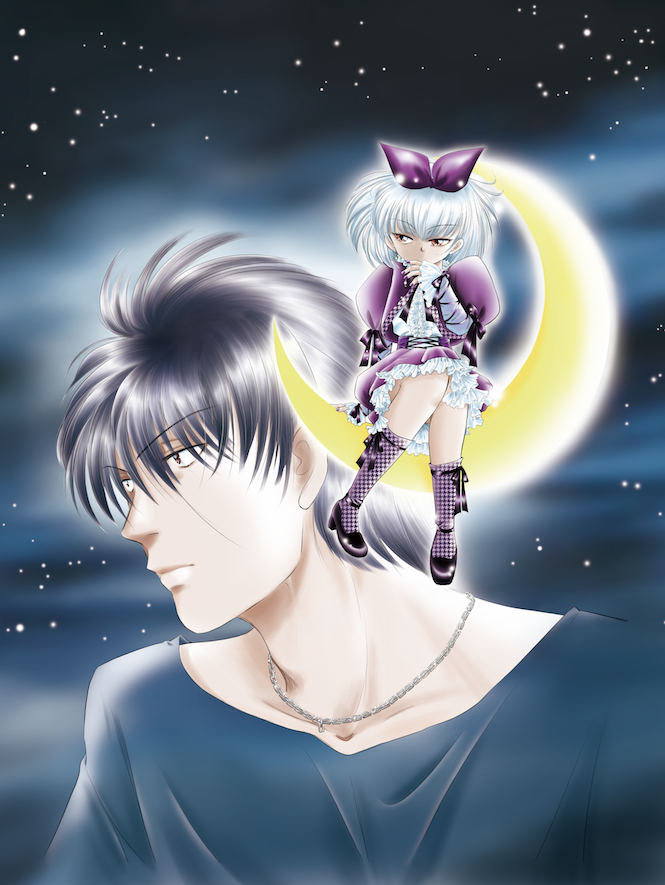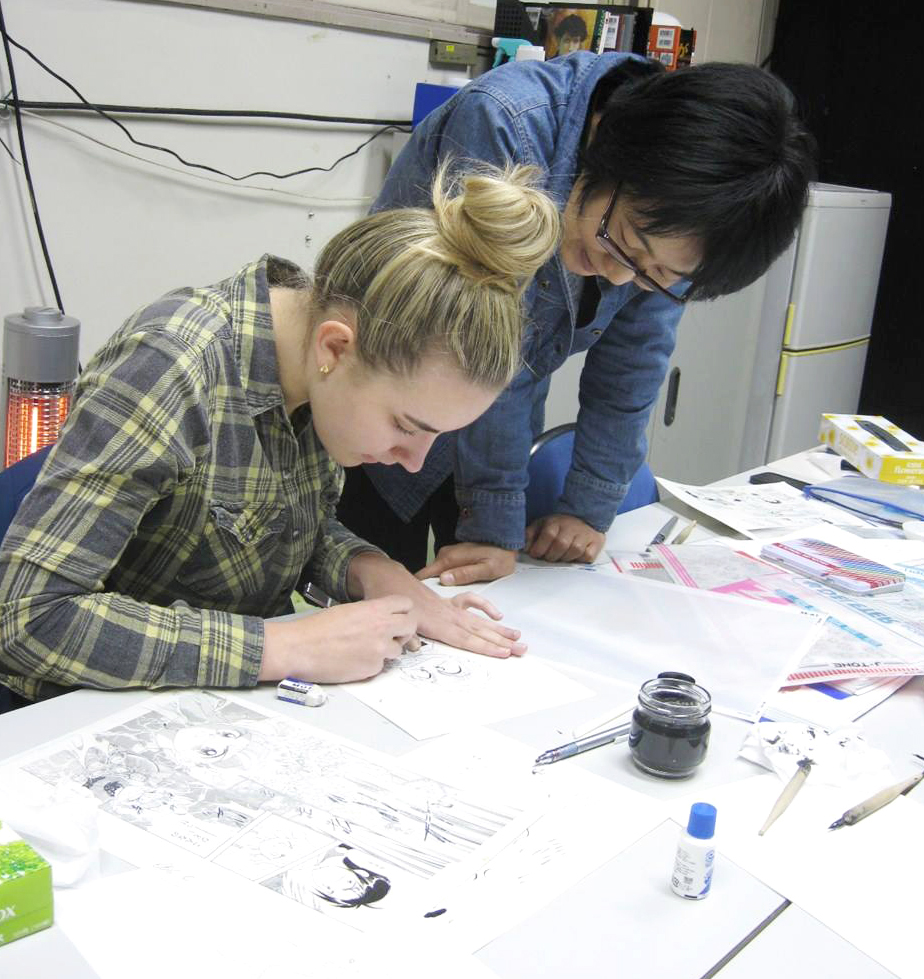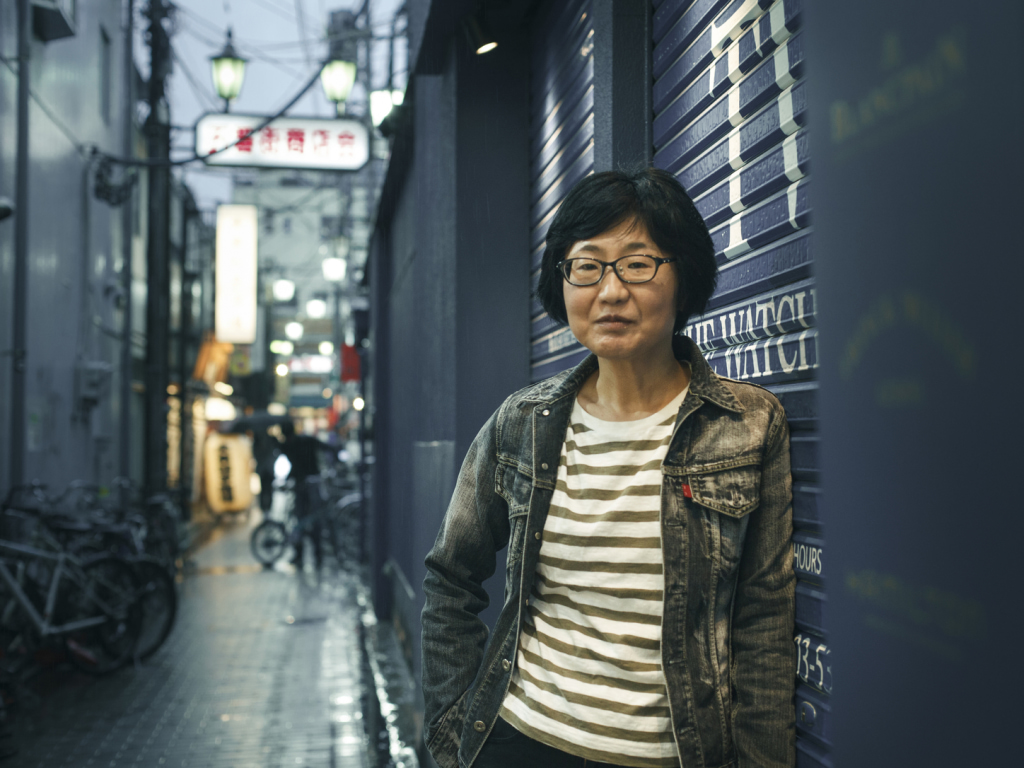Nao Yazawa, a manga industry professional with a career spanning decades, is best known for her work on Wedding Peach, a shojo manga-turned-anime from the early 1990s. Her current work includes Moon & Blood, a teenage story of vampire and human romance. She also teaches her craft at an English-language manga school based in Nakano.
What is a typical day like for a manga artist?
It depends on the person and their own pace, as well as the magazine you work for – whether it’s weekly, monthly, or if it’s shonen [manga for teenage boys] or shojo [manga for teenage girls]. For a weekly magazine, you need a very methodological system. Many weekly manga artists work for a week with one day off, so for example Monday to Saturday. There may be three days dedicated to story creation, one day for writing it, one day for pencil drawing, and then one day spent on inking it.
In my case, I worked for a monthly magazine so I provided my work a month in advance. Basically, I’d have five to seven days off where I’d just vaguely be thinking of ideas while relaxing. The remaining three weeks are for work. I never had trouble coming up with the basic idea, but sometimes I’d get stuck on the storyboard – that’s the rough panel work. But if you get stuck on that part, you’ll get a lot of sleepless nights later! The basic storyboard idea usually takes about a week. In that case, I’d have two weeks for drawing, which was quite easy – it was safe. But sometimes storyboards took an extra half-week, or even a week longer, and then it got very hard. We had to produce 40 to 50 pages for each issue. Forty pages in two weeks with an assistant is easily done.

Moon & Blood manga by Nao Yazawa
Why did you choose this job?
I knew it was a very hard job, even as a child. I didn’t seriously think I could become a manga artist even as I kind of worked towards it. When I was asked what I wanted to be, that’s what I answered. I figured I could work at a publisher and become an editor if it didn’t work out. I didn’t study anything about it, though. At university I chose to study Chinese history, because I was interested in it, and also because in a practical sense, history is a kind of human drama, so I thought it might be inspiring for stories. Once it was time to start job hunting, I thought I could become a civil servant. Then I would get real holidays and I could draw manga in my free time.
I had submitted my work to manga competitions before – entering competitions is a good way to get published and make your debut – but I was too much of a coward to visit publishers to get comments on my work. Eventually, I entered a competition, but I forgot to include a self-addressed envelope so they couldn’t return my work to me. I called the publisher and brought some other work with me. The editor there said my work wasn’t good enough yet, but gave me some comments and by my third competition entry I won. Then, I finally thought I could become a manga artist. Many people doubted I could do it. But at the end of that year I could debut. I was definitely on the lucky side.
How did you end up teaching manga drawing in English?
Now that’s a winding story. Initially, my English was the same as a typical Japanese person’s – my level stopped at high school. When I debuted in 1989, I started working at Korokoro Special, which was for boys. Honestly, I was never a fan of shojo manga, so I didn’t know how to draw it. But as I worked there, the editors started a new shojo magazine, but aimed more at younger girls. An editor from Korokoro Comics moved to the new magazine and asked if I would join him. So I got that series and somehow that led me to Wedding Peach. And Wedding Peach led me to studying English because I was invited to go to a convention in Germany. The convention led to me working with a toy manufacturing company that wanted to create manga and toys for the US, and eventually, that led me to teaching manga here. So it was coincidental, really.

Do you have any advice for aspiring manga artists?
If you work hard, sooner or later you can get a debut. Debut means getting a prize at a competition and having that work published. Getting published once is possible if you work hard. Even if you’re very talented, you need some luck. You need effort and talent too, but sometimes it’s just the wrong timing or the wrong magazine. It’s the same with being a movie star or an astronaut. Many people work hard, but only a few are lucky enough to make it.
Nao Yazawa offers a selection of stand-alone lessons, short and long courses for beginners, hobbyists, and advanced artists at Nakano Manga School, which can be booked at english.nakanomangaschool.jp
Main portrait image by Sybilla Patrizia









